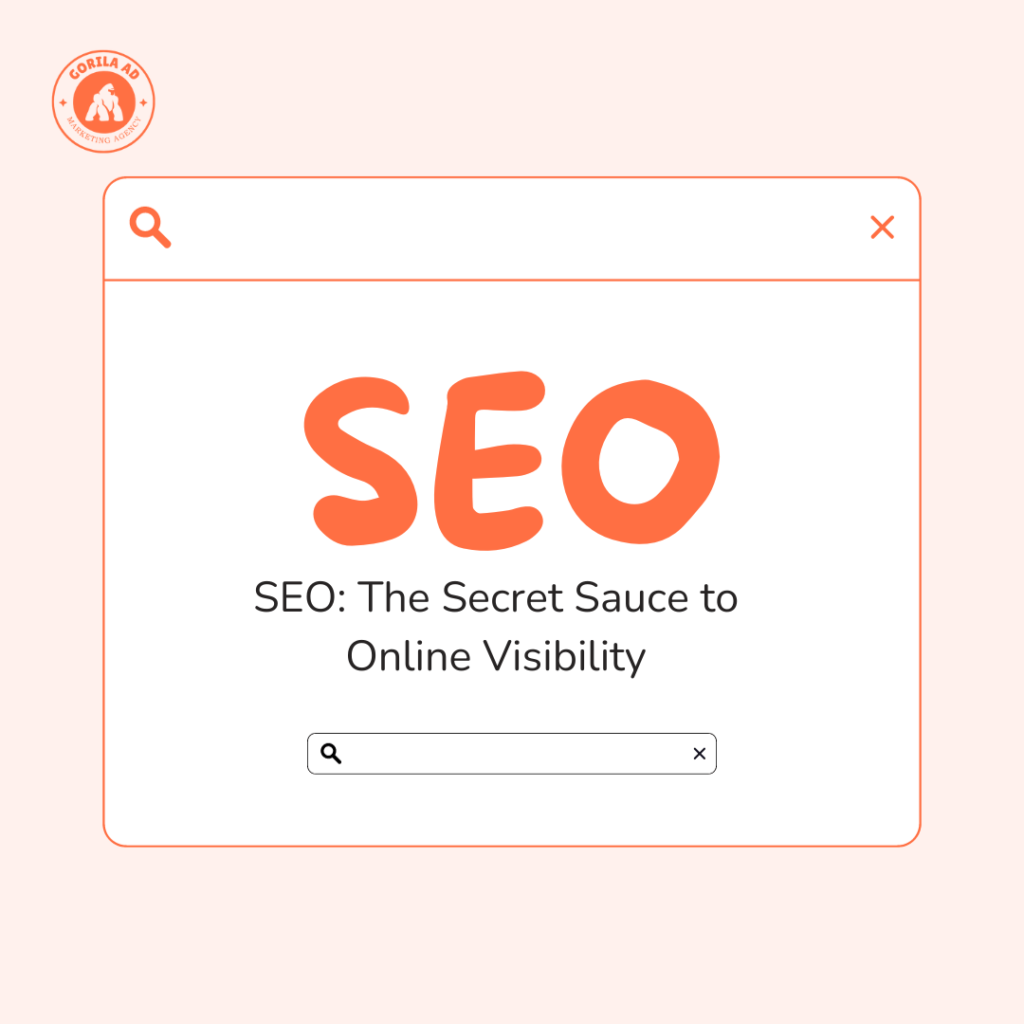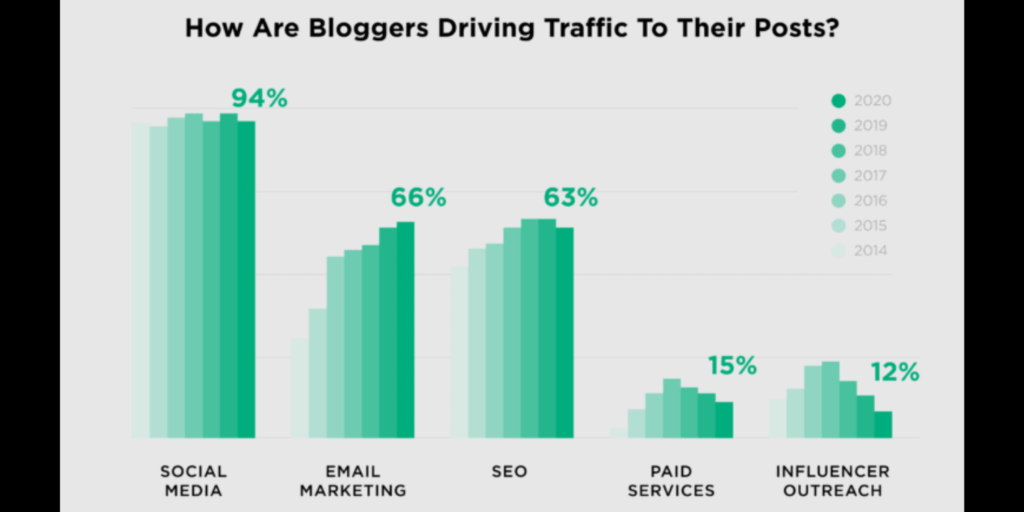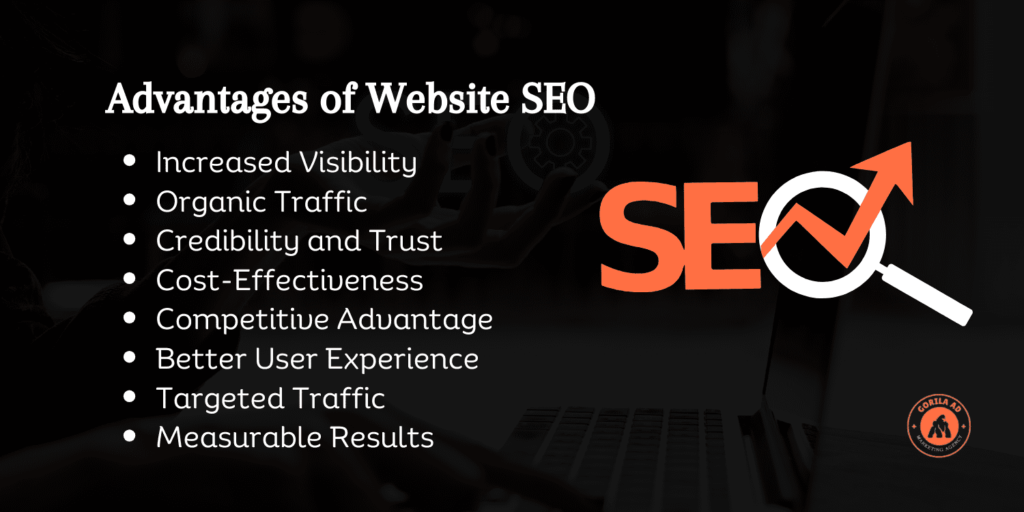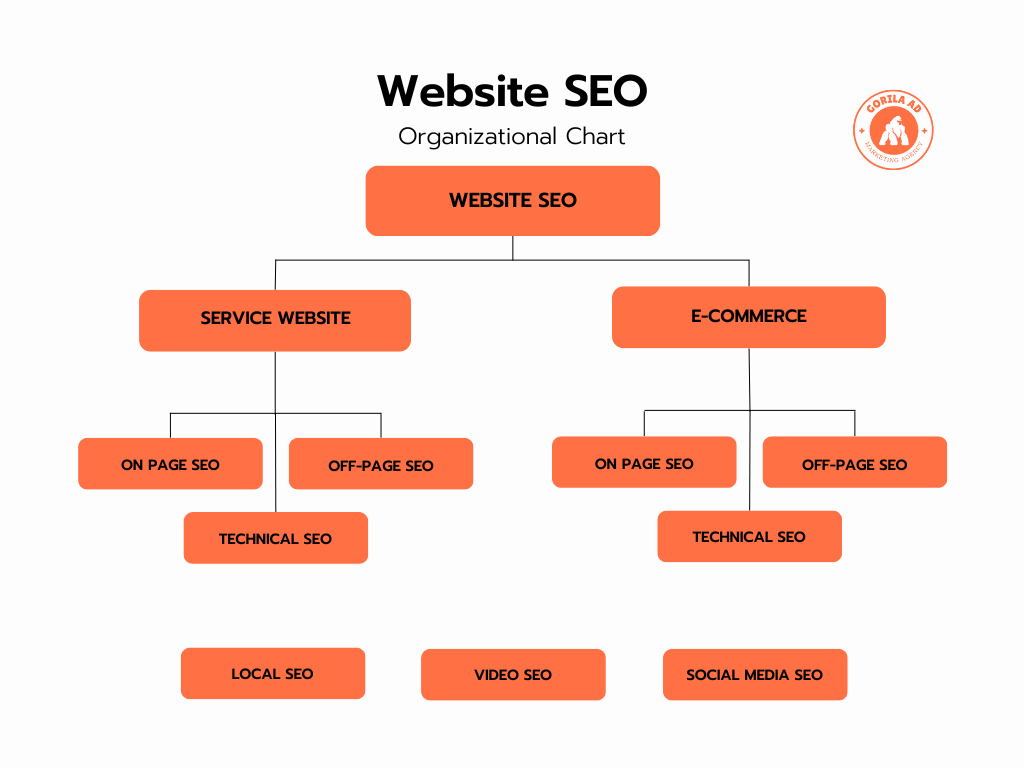
What IS SEO?

Have you ever wondered how some websites always seem to rank at the top of search engine results pages (SERPs)? It’s not magic. It’s search engine optimization (SEO)
SEO, also termed search engine optimization, is the method used to enhance your website’s position in SERPs, aiming to increase its visibility for a broader audience to discover. And it’s one of the most important things you can do to improve your online visibility and traffic.
Top Search Engine Optimization (SEO) statistics:

These are the most interesting search engine optimization (SEO) stats we think you should know: (Source)
- Google provides no organic search traffic to 90.63% of web pages.
- Search engines initiate 68% of online experiences.
- Only 0.63% of individuals searching on Google click on results found on the second page.
- Organic search contributes to 53.3% of total website traffic.
- Google Search, Google Images, and Google Maps account for 92.96% of worldwide traffic.
- SEO generates over 1,000% more traffic compared to organic social media.
- Approximately 60% of marketers consider inbound strategies (such as SEO, blog content, and more) as their most valuable source of leads.
- SEO leads have a 14.6% close rate.
But what exactly is SEO?
In its simplest form, SEO is about making your website more attractive to search engines. Search engines consider various factors to assess website ranking, such as content quality, quantity, and caliber of backlinks, along with the overall user experience provided by your site.
This indicates that SEO goes beyond merely stuffing keywords and deceiving search engines into elevating your website’s ranking. It’s about creating a high-quality website that is informative, engaging, and easy to use.
Why is SEO important for Small or Large Business?

For businesses, search engine optimization (SEO) is crucial for all sizes to achieve higher rankings in search results, attract more visitors, and increase revenue. However, more than simply having a website is required to guarantee success.
- In a crowded online landscape, it’s crucial to make your website visible to potential customers. To achieve this competitive edge, search engine optimization (SEO) strategies are indispensable.
- Drawing upon insights from leading subject matter experts, we’ve compiled compelling statistics that underscore the importance of SEO:
- Organic search accounts for 53.3% of website traffic (Brightedge).
- SEO generates over 1,000% more traffic than organic social media (Brightedge).
- Before making a purchase, 53% of consumers turn to search engines for product research (Google).
- Online searches initiate 60% of shopping journeys (Google).
- A staggering 75% of searchers never venture beyond the first page of search results (Hubspot).
- Among marketers, 49% acknowledge that organic search delivers the highest ROI of any marketing channel (Search Engine Journal).
- Compared to digital advertising, SEO can reduce customer acquisition costs by 87.41% on average (Terakeet).
- According to 70% of marketers, SEO outperforms PPC in terms of results (Databox).
- In the B2B sector, 61% of marketers credit SEO and organic traffic with generating more leads than any other marketing initiative (Hubspot).
- Nearly half (46%) of Google searches are for local businesses or services (Search Engine Roundtable).
These statistics clearly demonstrate that SEO is not just an option for startups or small businesses; it’s a necessity for driving growth and achieving success in today’s digital marketplace.
What does this mean for you?
By investing in SEO, you’re capitalizing on a substantial opportunity to connect with your intended audience and create leads and sales.
Here are a few tips for improving your SEO:
- Craft top-notch content that aligns with your intended audience and is optimized for search engines.
- Make sure your website is mobile-friendly.
- Improve your website’s loading speed.
- Incorporate pertinent keywords across your website, encompassing titles, headings, and body text.
- Build backlinks to your website from other high-quality websites.
The worthiness of SEO (Search Engine Optimization) depends on various factors, including your specific goals, the nature of your business, and your resources. Let’s compare the advantages and disadvantages.
Advantages of Website SEO:

Increased Visibility
SEO aids in elevating your website's position in search engine results, increasing the likelihood of users discovering your content when they search for pertinent keywords.
Organic Traffic
It drives organic (non-paid) traffic to your website, reducing the need for costly advertising and increasing the chances of attracting valuable visitors.
Credibility and Trust
Websites appearing at the pinnacle of search results are frequently seen as more credible and reliable by users. SEO can bolster your site's reputation.
Cost-Effectiveness
Compared to paid advertising, SEO is a cost-effective long-term strategy that can provide a consistent flow of organic traffic over time.
Competitive Advantage
SEO allows you to stay competitive by ensuring your website stays visible and relevant in the ever-evolving online landscape.
Better User Experience
SEO involves optimizing your website structure, content, and performance, which leads to a better user experience. This action has the potential to decrease bounce rates and boost engagement.
Targeted Traffic
SEO allows you to target specific keywords and demographics, ensuring that your content reaches the right audience.
Measurable Results
SEO tools offer data and analytics, enabling you to monitor your website's performance and implement data-informed enhancements.
Type Of Search Engine Optimization (SEO):
There are several types or categories of Search Engine Optimization (SEO), each focusing on different aspects and goals. The main types of SEO include:

Website SEO Steps: A beginner guide:
Search Engine Optimization (SEO) revolves around boosting your website’s visibility and placement in search engine results pages (SERPs). Implementing a few uncomplicated strategies allows you to optimize your website for SEO, attracting increased organic traffic.
Step 1: Choose the right keywords
The initial stage of SEO involves pinpointing the keywords that your intended audience is using in their searches. Once you’ve identified these target keywords, you can tailor your website’s content and structure to align with them.
Here are a few tips for choosing keywords:
- Consider the words and phrases that your potential audience is expected to utilize when seeking information or products similar to yours.
- Utilize long-tail keywords, which are more precise and face less competition compared to short-tail keywords.
- Use keyword research tools to help you identify relevant keywords and their search volume.
Step 2: Optimize (on-page SEO) your website content
Once you have your keywords, you need to optimize your website content for them. This includes using your keywords in your title tags, meta descriptions, headings, and throughout your body text.
Here are a few tips for optimizing your website content:
- Ensure that your content is of high quality, informative, and directly relevant to your targeted keywords.
- Use your keywords naturally throughout your content, but avoid keyword stuffing.
- Use synonyms and related keywords to make your content more readable and informative.
- Optimize your images by using relevant alt text.
Step 3: Build backlinks (off-page SEO)
Backlinks are links originating from other websites to your own. Search engines perceive backlinks as an endorsement of confidence in your website, and they can assist in enhancing your ranking in search engine results pages (SERPs).
Here are some tips for building backlinks:
- Generate top-notch content that other websites will find valuable and desire to link to.
- Guest posts on other websites in your industry.
- Promote your content on social media and other online platforms.
- Engage with other websites and request them to link to your content.
Step 4: Monitor your results
SEO requires continuous attention, making it crucial to monitor your outcomes and adapt your strategy accordingly. Tools such as Google Search Console can help track your keyword rankings and website traffic.
Here are a few tips for monitoring your SEO results:
- Track your keyword rankings over time.
- Monitor your website traffic & identify which pages are getting the most organic traffic.
- Analyze your backlinks to see which websites are linking to your content.
- Use SEO tools to identify opportunities for improvement.
Search Engine Optimization (SEO) Tips:

Here are a few creative tips for optimizing your website for SEO:
Use storytelling in your content. People are more likely to read and share content that is engaging and informative. Try to use storytelling techniques in your blog posts, articles, and other website content.
Craft visually captivating content. Incorporating images, videos, and infographics can enhance the visual appeal and engagement of your content. This enhancement can potentially elevate your click-through rate (CTR) and boost organic traffic.
Use social media to promote your content. Social media is a great way to promote your content to a wider audience and build backlinks to your website.
Partner with other websites in your industry. You can partner with other websites in your industry to create cross-promotional opportunities. This action can enhance brand recognition and steer traffic to your website.
By adhering to these uncomplicated steps, you can optimize your website for SEO and begin drawing in more organic traffic. Remember, patience and consistency are key in your SEO endeavors. Results may take time to materialize, but the long-term benefits make it a worthwhile pursuit.
E-Commerce Website SEO Steps: A Creative Guide:

Ready to take your e-commerce website to the next level? SEO is the key to getting more traffic and sales, but it can be daunting if you need help figuring out where to start.
Here’s a guide to e-commerce website SEO, broken down into easy steps:
Step 1. Keyword research:
Consider the words your customers might use when searching for your products or services. Use keyword tools to find specific keywords with less competition.
Step 2. On-page SEO:
Once you have your keywords, you need to optimize your website for them. This includes using the keywords throughout your site, in your titles, meta descriptions, headings, and body text. You should also make sure your site is well-structured and easy to navigate, with relevant internal linking.
Step 3. Technical SEO:
Technical SEO ensures your website is technically solid and simple for search engines to explore and list. It involves tasks such as enhancing site speed, repairing broken links, and sharing your XML sitemap with Google Search Console.
Step 4. Content SEO:
Good content is crucial for SEO. Make useful and interesting content related to your main keywords and audience. Regularly post new content to keep your site up-to-date and valuable.
Step 5. Link building:
Link building is still one of the most important ranking factors in SEO. The more high-quality backlinks you have to your website, the higher you'll rank in search results.
Step 6. Track your results:
After putting your SEO plan into action, it's crucial to monitor your progress to understand what's effective and what's not. Utilize Google Analytics to track your traffic, rankings, and conversions.
Here are some creative ideas for getting backlinks:
- Create guest posts for other high-quality websites in your industry.
- Contact influential figures in your industry and request reviews of your products or services.
- Generate infographics, videos, and other shareable content formats.
- Participate in forums and online communities where your target customers are active.
Search Engine Optimization (SEO) is a continual process, yet by adhering to these steps, you can begin observing enhancements in your website’s visibility and organic traffic.
Here’s a creative analogy to help you remember the steps of e-commerce website SEO:
Imagine your e-commerce website is a pirate ship sailing the seas of the internet. In order to find your treasure (customers), you need to make sure your ship is:
Keyword research:
You should determine which "islands" (keywords) your potential customers are more likely to explore.
On-page SEO:
Your ship needs to be well-maintained and easy to navigate, with clear signs pointing to your treasure.
Technical SEO:
Your ship needs to be seaworthy and able to withstand the storms of the internet.
Content SEO:
You need to have a treasure map (content) that leads your customers to your treasure.
Link building:
You need to have a strong crew (backlinks) to help you sail your ship and find your treasure.
By following these steps, you can turn your e-commerce website into a pirate ship that attracts customers from all over the internet.
Local SEO:
Local search holds significant power for small businesses, given that 46% of all Google searches seek local information. Neglecting to optimize your business for local search could result in missing out on potential nearby customers eager to make purchases. In essence, prioritizing local SEO is imperative for maintaining your business’s relevance.
Video SEO:
In the fast-paced digital realm, video content reigns supreme. But here’s the catch—amidst the myriad of videos flooding the internet, how do you ensure that your masterpiece stands out, captures attention, and reaches its intended audience?
Welcome to the world of Video SEO, where your creative endeavors meet strategic optimization for maximum impact.
Social Media SEO:
While search engines don’t officially use social signals as a ranking factor, there are advantages to merging these two strategies. When your site attracts substantial traffic, search engines view your brand as credible, relevant, and high-quality. Meeting these criteria could lead to higher search results. Posting engaging, clickable content on social media may increase traffic.
FAQ
Q1. What is Search Engine Optimization (SEO) content?
– Search Engine Optimization (SEO) content refers to online material, such as articles, blog posts, or web pages, that is created with the primary goal of optimizing it to rank higher in search engine results.
Q2. Why is Search Engine Optimization (SEO) content important?
– Content optimized for Search Engine Optimization (SEO) assists websites in achieving higher rankings in search engines, consequently driving increased organic traffic and enhancing the website’s visibility. This can result in higher conversion rates & an improved user experience.
Q3. How can I create SEO-friendly content?
– To create SEO-friendly content, focus on keyword research, use relevant keywords naturally, create high-quality and informative content, optimize meta tags, and ensure your site’s technical aspects are in order.
Q4. What is keyword research, and how do I do it?
– Keyword research entails finding and selecting keywords that your intended audience is probable to utilize during online searches. It involves tools like Google Keyword Planner, and you should consider relevance, search volume, and competition when choosing keywords.
Q5. Is keyword stuffing a good SEO strategy?
– No, keyword stuffing is a bad practice. It involves overusing keywords unnaturally in your content, which can result in poor user experience and may lead to search engine penalties.
Q6. How often should I update my SEO content?
-The frequency may vary depending on your website and industry, but consistently updating and refreshing your content can be advantageous. This tells search engines that your content stays up-to-date and relevant.
Q7. Should I focus on on-page or off-page SEO for content?
– Both on-page and off-page SEO are important. On-page SEO includes enhancing the content and structure of your website. Off-page SEO involves building backlinks and establishing your site’s authority.
